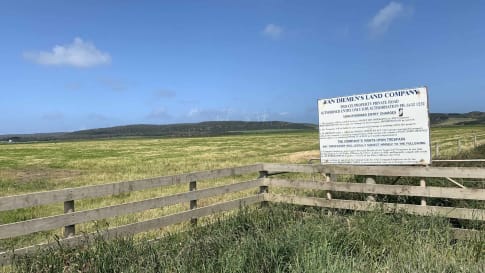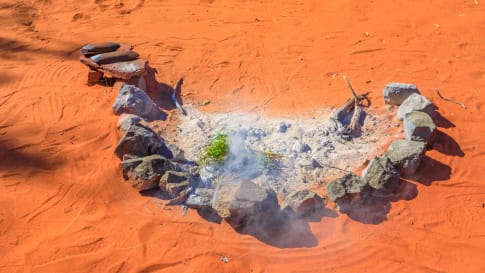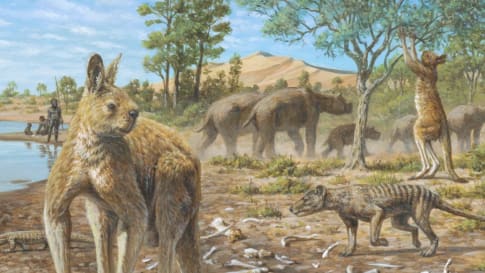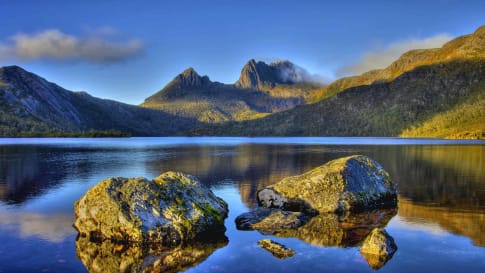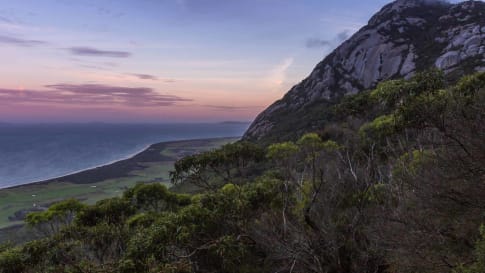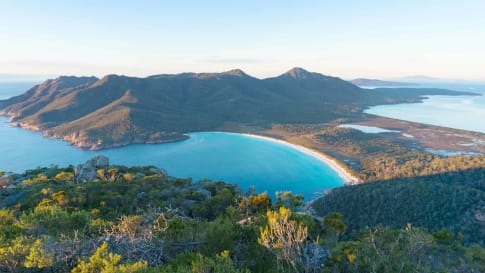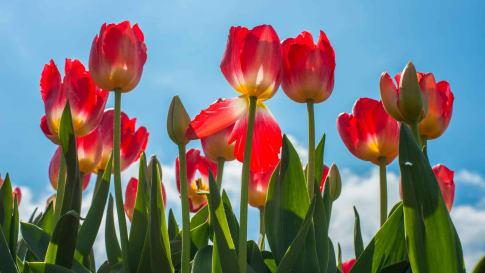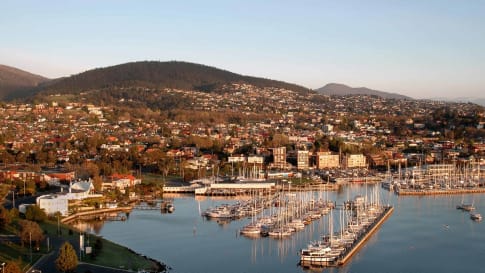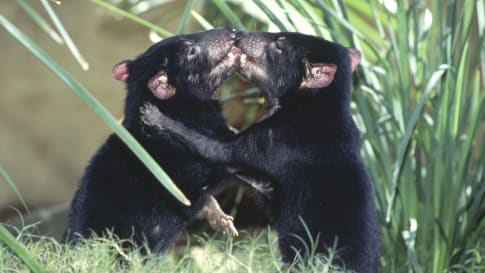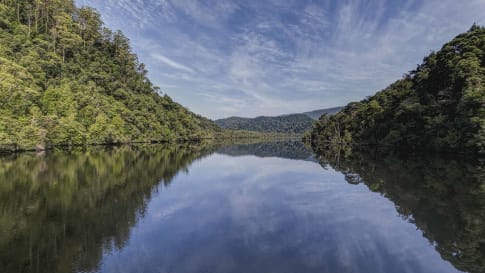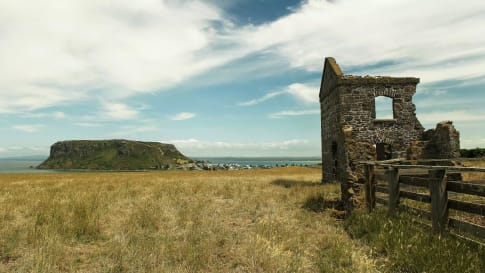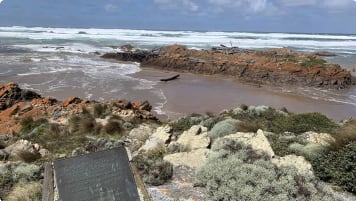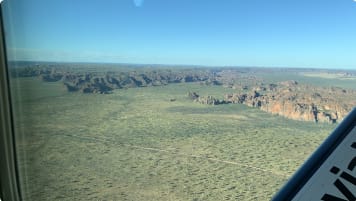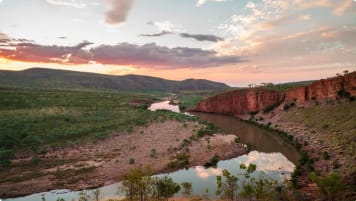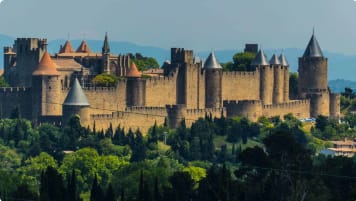Flinders and King island and Strahan air tour for seniors
King island and Flinders Island are discovered on this small group air tour for seniors and mature travellers that starts and finishes in Melbourne. The group also visits Strahan on the West coast of Tasmania
From A$10,495AUD
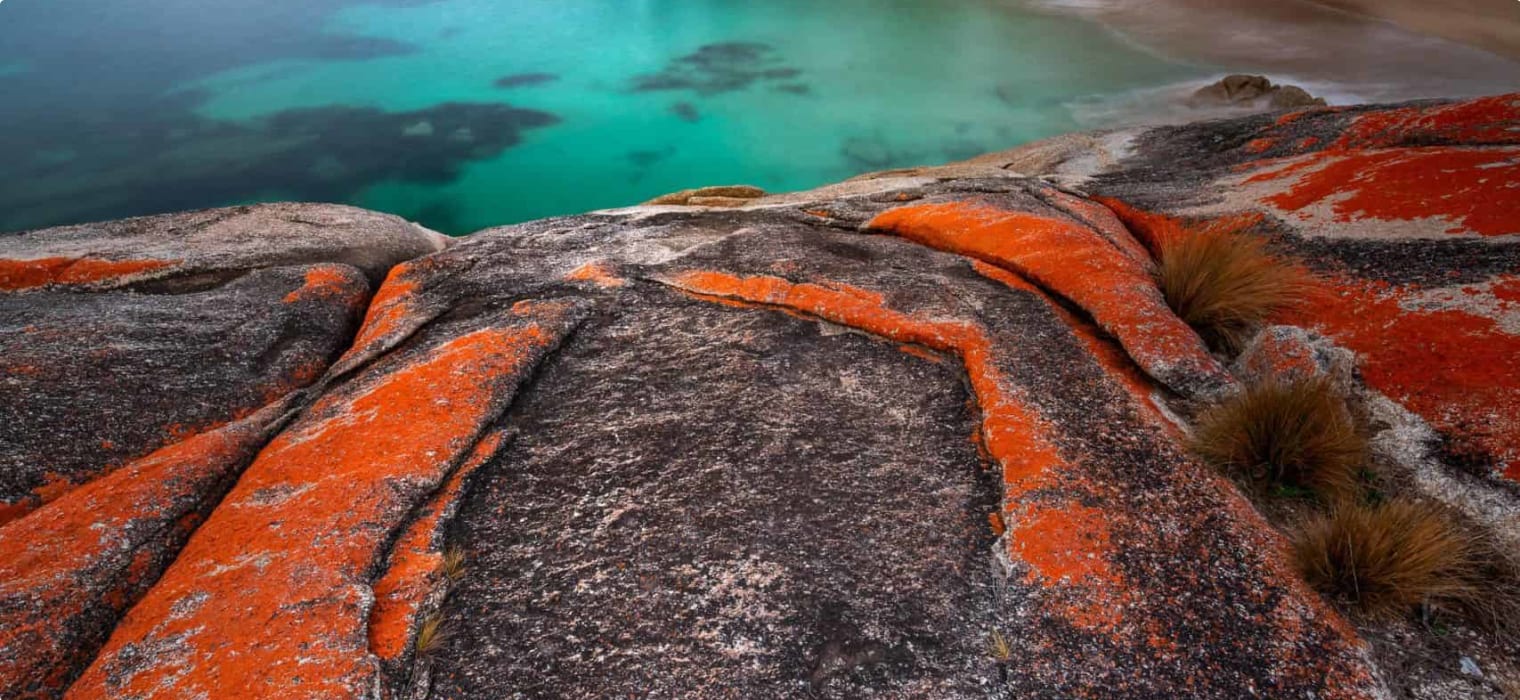
Highlights
- 1. Visit and learn about King Island
- 2. Visit Strahan, located on the harsh West Coast of Tasmania
- 3. Learn about the Aboriginal and then colonial history of this island group.
Departure Dates
| Departure Date | Price |
|---|---|
| 12 November 2023 Ends 18 November 2023 • 7 days A$10,495 Twin A$11,495 Single Available | Selected |
| 07 April 2024 Ends 13 April 2024 • 7 days A$10,995 Twin A$11,995 Single Available | |
| 10 November 2024 Ends 17 November 2024 • 8 days A$10,995 Twin A$11,995 Single Available |
Flinders and King island and Strahan air tour for seniors
King Island and Flinders Island are curiosities for the senior couple and mature solo traveller who enjoy small group tours with like minded people that seek experiences such as a private air tour to get beyond the tourist attractions. This private air tour begins and finishes in Melbourne Victoria, and is limited to 8 travellers plus a tour leader.
Aircraft type
The aircraft selected, as this tour involves flights over water, Odyssey Traveller has sought to charter and use a twin engine plane for this trip. The plane will be a twin engine Beechcraft Super King or equivalent. The Super King Air is the most popular twin-engine turboprop aircraft ever built. The configuration enables up to 10 passengers plus crew to be seated in air-conditioned comfort.
Travelling at speeds in excess of 500km per hour and certified for all weather flight up to 35,000ft the Beechcraft Super King Air is all about performance, versatility and passenger comfort for the senior traveller.
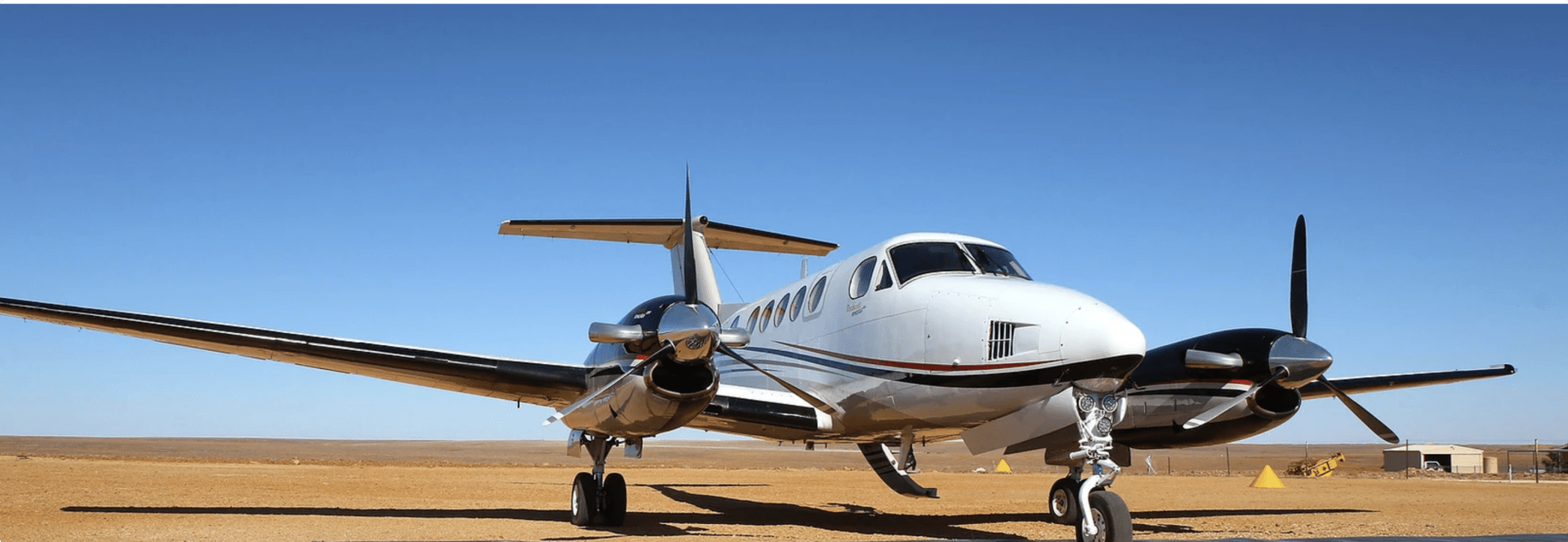
This short tour is a terrific addition to the other air tours offered by Odyssey Traveller.
Carved by the treacherous waters of Bass Strait, Flinders Island and King Island are unique destinations unto themselves, with plenty to see and do. Sparsely populated, the islands hold great natural beauty with long sandy beaches, huge lichen-covered boulders, lagoons and rugged mountain ranges. On this seven day discovery tour, experience the remoteness, rich history and delicious local produce that make these islands so special. The program heads to King Island first. This program is part of our collection of Australia and New Zealand based air tour programs
King Island
King Island is often considered as being a windswept rock in the Bass Strait. That this remarkable and beautiful island is at the same latitude as the idyllic Mediterranean holiday resort of Corfu in Greece. We need to rethink King Island. Already it has an extraordinary reputation for its dairy products. King Island butters, cheeses and creams
King Island lies between Victoria and Tasmania, has over 145 km of coastline, an estimated 57 offshore wrecks (a legacy of sailing vessels trying to traverse the narrow strait between the mainland and Tasmania) and is a largely untouched wonderland of fascinating walks, seabirds and wildlife. The island is 58 km long and 21 km wide and has a total area of 126,000 ha. It was once richly forested but since the arrival of Europeans it has been cleared for farming. The weather can be pretty special! The length of the island has its western side facing into the prevailing weather systems of the Southern ocean. Two seasons a day would be a regular event, Spring and Winter. Aboriginal history is sparse, the island is dominated the the colonial history led by the story of Shipwrecks and lives lost trying to sail through the 84km gap between King Island and Cape Otway after several thousand kilometres of ocean!
The history of King Island is, tragically, the history of shipwrecks. The passage between the mainland and the island was too small; the ships went off course and more than 50 vessels hit the island's rocky shores with huge loss of life. The narrow passage between Cape Otway and Cape Wickham was known as 'the eye of the needle'. It was only 84 km wide and was the first land sighted by ships which had sailed from South Africa.
This small group is on King island with local guides for a day and half. An air tour like this will always be watching the weather approaching from the west to minimise disruptions to the touring program.
Some of the places visited on King island that it is famous include the lighthouse.
Cape Wickham Lighthouse
The Cape Wickham lighthouse was opened in 1861. The light itself is elevated 85 metres above sea level (it is 48 metres tall) and can be seen from 24 nautical miles away. It was automated in 1918. Granite was quarried nearby and the stones were hauled to the top of the hill on a horse-driven tramway. While constructing the lighthouse skeletons, thought to be some of the 225 people (mostly convict women and children) from the vessel Neva which had been wrecked on the coast in 1835, were found in the area.
The excellent Lighthouses of Australia Inc site (check out http://www.lighthouses.org.au/lights/TAS/Cape%20Wickham/Cape%20Wickham.htm) points out the scale of the shipwrecks in the area noting: "Suddenly from an ocean of thousand of kilometres ship's captains had to find a gap 84 kilometres wide! This lead to tragedies on both capes and the need for these lights. It was Australia's largest maritime disaster, the wrecking of the Cataraqui with losses of 402 lives in 1845, that eventually lead to the establishment of Cape Wickham. An earlier loss of the Neva with 225 lives, mainly convict women and children, in 1835 had brought no reaction from authorities.
"Even after the establishment of the light there were still wrecks as some ship's masters mistook the light for Cape Otway. One such ship was the Netherby, wrecked near the current Currie Lighthouse in 1866, amazingly without loss of life. This was followed by the Lock Leven in 1871, and the Anna in 1873, and lead to the establishment of the Currie Lighthouse. At these times the Cape Wickham Lighthouse became a refuge to the survivors and a final resting place to the victims. Near the lighthouse are the unmarked graves of many of the Neva's victims and the marked graves of some later mariners, including the master of the clipper Loch Leven, that attest to these tragedies."
Strahan, Gordon River, Tasmania
From King Island we travel south to Tasmania joining at Cape Grim with Stanley in the distance. Stanley was where the first Bass strait departed for Melbourne.
The flight path follows the beautiful west coast through to Strahan where we spend 2 nights.
Tasmania is one of Australia's last great wildlife strongholds. This makes it a naturalist's paradise on one of our Tasmania package tours. The dramatic scenery of places like the Gordon River, Cradle Mountain, the rugged South East coast and the South West coast and any National Park creates for a visually stunning trip by plane.
This particular holiday package allows our tour guide to get you to the right locations to observe the shy creatures of the night such as the Tasmanian Pademelon, Bennett’s Wallaby and Long-nosed Potoroo appear from their hidden daytime resting places whilst at Strahan or on Flinders island.
During our tour we will also examine aspects of Tasmania’s Aboriginal and Early European history, as well as a look at the conservation history of this island state.
Strahan is on the edge of Tasmania's World Heritage-listed, Franklin-Gordon Wild Rivers and South West National Park, they have been combined to protect one of the world’s last great temperate rainforests. During the groups time in Strahan we take a guided tour across the bay to Sarah island and along part of the Gordon river, this is expected to be visually a unique cruise with spectacular views along the Gordon river. The guided tour of Sarah island is Macquarie Harbour Penal Station, just over 1150 prisoners served time at Macquarie Harbour, of whom fewer than 30 were women. The main settlement was located on Sarah Island, but there were many outlying stations and the penal station covered a vast area. The enigma of Macquarie Harbour penal station is that, despite its fearful reputation as a site of punishment, it also functioned as a highly productive colonial shipyard. This small island was known to Aboriginal people as Langerrareroune, was called Sarah Island by the British colonisers
It was in Aboriginal records a bitter staging-post for west coast Aboriginal people or Toogee to be forcibly detained en route to Flinders Island. The group then tours part way along the river on a Gordon river cruise, viewing the temperate forests and gaining an understanding of the importance of Huon pine from the local Huon valley.
The Franklin-Gordon Wild Rivers National Park is home to important archaeological sites marking the southern-most extent of human habitation during the last Ice Age.
After the groups evening meal there is an opportunity to take a trip out in the dunes to a shearwater colony to witness the return from feeding of the migratory birds along this rugged coastline, exposed to the weather. The following day we take a the Gordon river cruise into this world heritage listed National park.
Flinders Island
This air tour departs for Flinders Island. Depending on the weather it will be up and over Queenstown, Lake St Clair, Cradle Mountain, over Launceston to Flinders Island for the next two nights.
Flinders Island , located in the Bass strait of Australia, was mapped by the British explorer Matthew Flinders in 1798. Flinders Island is the largest of the 52 islands that make up the Furneaux group, which is the eastern group of the two groups islands of the coast of northern Tasmania. The group to the west which includes King island is the Hunter group. The island supports a wide variety of abundant wildlife including the protected Cape Barren Goose and a small permanent population of people.
The traveller experiences spectacular scenery, rugged coastline, stunning views often in a wilderness setting. The visitor learns about the abundant wildlife including sea lions, wildflowers and spectacular scenery along with the amazing geology and fascinating, if not sometimes uncomfortable history.
Flinders Island – Furneaux Group of Islands
Flinders is the largest island of the 52 islands that make up the Furneaux Group. Flinders and the surrounding islands are all that remain of the land bridge that once connected Tasmania to mainland Australia and was still present some 10,000 years ago. Flinders is an island of dramatic landscapes: from Mountainous granite ridges folding down from Mt Killiecrankie to the grey granite cliffs of Killiecrankie bay, to the gentle, green farmland that rolls through the eastern part of the island. It is known for its prolific birdlife; thousands of migratory birds rest here on their long flights to breeding areas north of the Arctic Circle. The history of the Furneaux Islands provides a significant component of the tragic story of the Tasmanian Aboriginals, as well as an account of the early maritime explorers, sealers, shipwrecks and cultural events that are of local and national importance. Much of the region is still exactly as Matthew Flinders found it when he first explored this area years ago.
As the ice age came to an end sea levels rose, and Bass Strait was formed which resulted in Flinders, Cape Barren and Three Hummocks becoming islands and small numbers of Tasmanian Aborigines living here being isolated from the mainland.
The Aboriginal community lived in isolation for several thousands of years until in the 1770's. The oldest archaeological site is an Aboriginal midden, which is some 7,000 years old. The first European to make contact with the islands was Tobias Furneaux, the commander of Captain James Cook's support ship. Furneaux's ship became separated from the Endeavour in fog and it wandered around the east coast of Van Diemen's Land eventually reaching the Furneaux group of islands. It was not known that Flinders Island was separate, and that Van Diemen's Land was not part of mainland Australia until George Bass and Matthew Flinders circumnavigated the main island between October 1798 and June 1799. Governor Philip Gidley King named the strait which separates Tasmania from the mainland after Bass and the main island in the strait after Flinders. The first European settlers on Flinders Island were sealers who lived rough and were only interested in killing seals for their oil, they typically sailed out from Launceston to the islands.
The tour returns to overnight in Melbourne, leaving mid-late afternoon.
Gallery
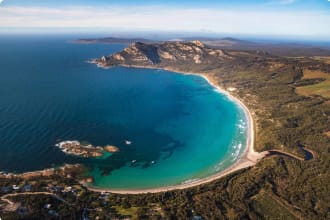
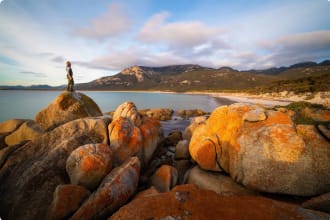
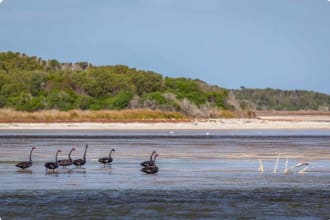
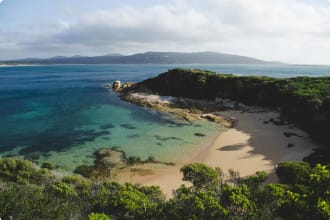
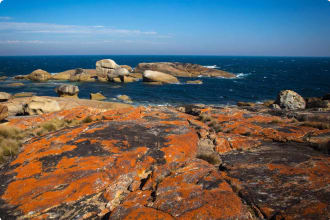
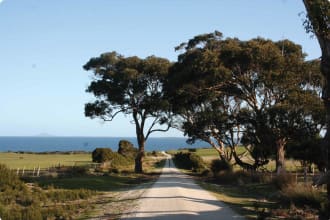
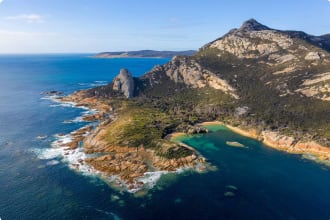
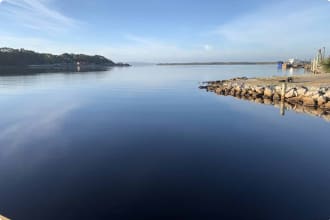
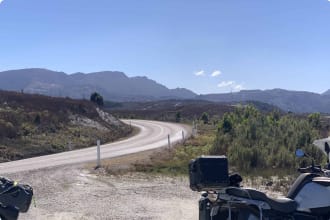
Itinerary
7 days
Day 1: Melbourne
Accommodation: The Victoria Hotel or similar
We meet as a group in the late afternoon.
There is a group welcome dinner this evening.
Day 2: King Island
Accommodation: King Island Hotel or similar
Departing Essendon Airport at 8.00am, head west for a stunning scenic flight over the 12 Apostles on the way to King Island.
Hop on your purpose-built 4WD vehicle, guided by a local, for a Hidden Southern Experience tour. You’ll discover bays and coves not generally seen by visitors as you traverse private property and, in some cases, go off-road.
Visit the 7,000-year-old Calcified Forest, where a short walk will work up an appetite for a white tablecloth paddock-to-plate lunch, including wine, local cheeses and fresh crayfish when in season. Learn of the island’s early history, sealers, lighthouses, kelp and its harvesters.
Journey to the most southern point of the island before arriving at your hotel. Relax with your fellow travellers and a pre-dinner drink before an evening meal at your accommodation.
Day 3: Strahan
Accommodation: Strahan Village or similar
The flight path today tracks along the over Cape Grim along the west coast highway and the Tarkine rainforest to Strahan.
The group has a walking tour of the town of Strahan and its history.
Day 4: Flinders Island
Accommodation: Furneaux Tavern or similar
The group takes the Gordon river cruise in the morning returning early afternoon. Then it is a short flight over the island of Tasmania to Flinders island for the next 2 nights.
Transfer to your hotel, the beautifully located, boutique Mountain Seas Lodge, at the foot of Mount Strzelecki. Enjoy a delicious, locally sourced dinner and relax in your individually decorated suite.
Day 5: Flinders Island
Accommodation: Furneaux Tavern or similar
The impressive Castle Rock is a photographer’s dream, with its striking colours and gorgeous backdrop. This massive granite boulder stands tall on the picturesque shoreline of Marshall Bay Conservation Area.
Stop at North East River on the northern tip of the island, the meeting point of the Tasman Sea and Bass Strait, then on to Palana where evidence of WWII surveillance is still visible.
A delicious picnic lunch will be served at Killiecrankie, famous for its white topaz known as Killiecrankie diamonds.
Reflect at Wybalenna, site of the Tasmanian Aboriginal settlement between 1833 and 1847, when all indigenous Tasmanians were moved to this location.
Visit the Furneaux Museum, which offers a fascinating insight into the history of the Furneaux Group of Islands, of which Flinders Island is just one of 52.
Day 6: Melbourne
Accommodation: The Victoria Hotel or similar
The morning is spent on Flinders. Then after lunch we return to Melbourne.
A farewell dinner this evening
Day 7: Melbourne
Tour concludes after breakfast.
Includes / Excludes
What’s included in our Tour
- 6 nights accommodation.
- 6 breakfasts, 4 lunches, often a light picnic style lunch, 6 dinners.
- Transport by modern and comfortable aircraft and vehicle suitable for the highway conditions.
- Entrances and sightseeing as specified.
- Services of Tour Leader for the duration of tour.
- Detailed Preparatory Information.
What’s not included in our Tour
- Return Domestic airfares.
- Comprehensive travel insurance.
- Items of a personal nature, such as telephone calls and laundry.
Participants must be able to carry their own luggage, climb and descend stairs, moderate walking on uneven surfaces between 3 - 5 kilometers per day. Suitable for most fitness levels
Book now
Make it a private tour
Easing your journey
Crossing international borders with restrictions
The list of requirements to travel internationally has changed and will continue to change for several years. Odyssey is here to assist you in managing your way through these requirements:
For more information see our Crossing international borders with restrictions page.
Book With Confidence
If less than 30 days before your tour starts you are unable to travel as a result of Government travel restrictions, Odyssey Traveller will assist you with a date change, provide you with a credit or process a refund for your booking less any non-recoverable costs.
See Terms and conditions for details.
Peace of Mind Travel
The safety of our travellers, tour leader, local guide and support staff has always been our top priority and with the new guidelines for public health and safety for keeping safe for destinations around the world, we’ve developed our plan to give you peace of mind when travelling with us.
See Peace of Mind Travel for details.

